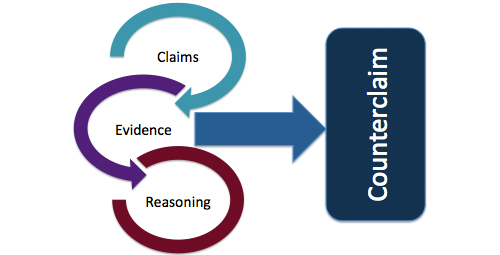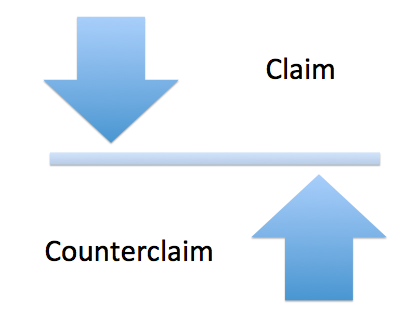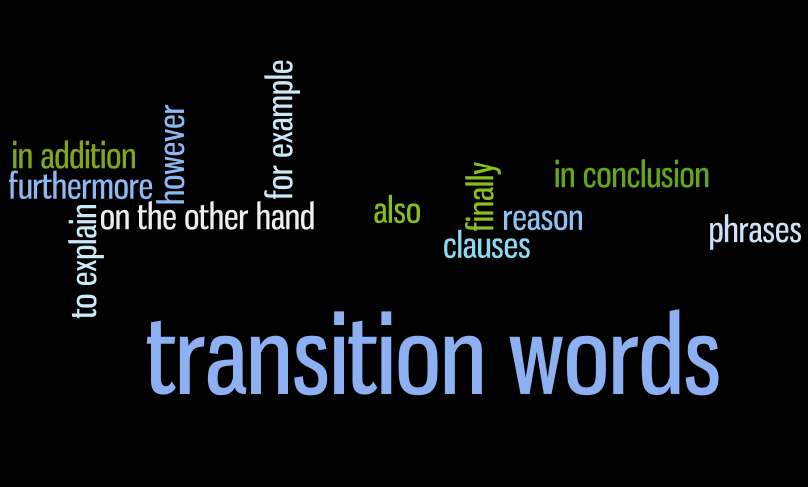Learn It
A good argument is organized in a way that establishes a clear relationship between the claim(s), counterclaims, evidence and reasoning. When you develop an argument, you want your reader to accept the claim, evidence and reasoning that you are presenting. In developing a strong argument, it is also important to include the opposing side of the issue, the counterclaim. When you include a counterclaim in your argument and address its strengths and limitations, your argument is stronger. You have shown your reader that you are looking at the full picture of the issue and that you have considered other ideas. This makes your argument more credible and further validates your claim.
View the slideshow below to learn how to develop a well-written argument. Refer to the Glossary for the definitions of bolded terms.

Can you remember your last argument? It was probably a heated debate filled with strong emotions that left you and the other person upset, and the issue unresolved. Outcomes like this might be avoided if both people took the time to carefully consider their own claim, evidence and reasoning, and the claim, evidence and reasoning of the other person.

Unlike verbal arguments, written arguments allow writers to take time and think critically about their own claim, evidence and reasoning, while also evaluating the claim, evidence and reasoning of the opposing view.
As you prepare to write using information from a text, read carefully to examine the claim, evidence, reasoning and counterclaims presented.

Your written argument should examine both the claim and counterclaim fairly. That means you should include evidence and reasoning for both sides. However, remember that while you are depicting both sides of an argument, you are also taking a position, which will be your claim in your own writing. To strengthen your claim, it will be important to identify the strengths and limitations of the counterclaim.

By addressing the strengths and weaknesses of the claims and counterclaims, you will be presenting an objective, unbiased view of the topic. This approach will also establish a formal style in your writing.

Once you have identified your claim, evidence, reasoning and counterclaims, you have the components of a strong argument. However, the organization of your argument is just as important as the argument itself. You want your argument to be written in a logical manner that clearly shows the relationship between the claim, counterclaims, evidence and reasoning.

Using words, phrases and clauses to link your ideas will help to build a well-written argument. Transition words such as “for example,” “to explain,” “reason” and “because” will help connect the claim, evidence and reasoning. Words like “but,” “however” and “on the other hand” will help to connect a counterclaim to the original claim. Transition words like “also,” “in addition” and “furthermore” may also connect ideas in your writing. Using “finally” or “in conclusion” will help to bring your argument to a close.

Finally, a strong argument always ends with a conclusion. Provide a concluding statement that follows and supports your argument.
Now go to the next page to practice identifying claims, counterclaims, evidence and reasoning that will help to build a strong argument based on the written explanation you developed in Writing Explanation Part 2: Crafting a Well-Written Explanation Opens a new window.









